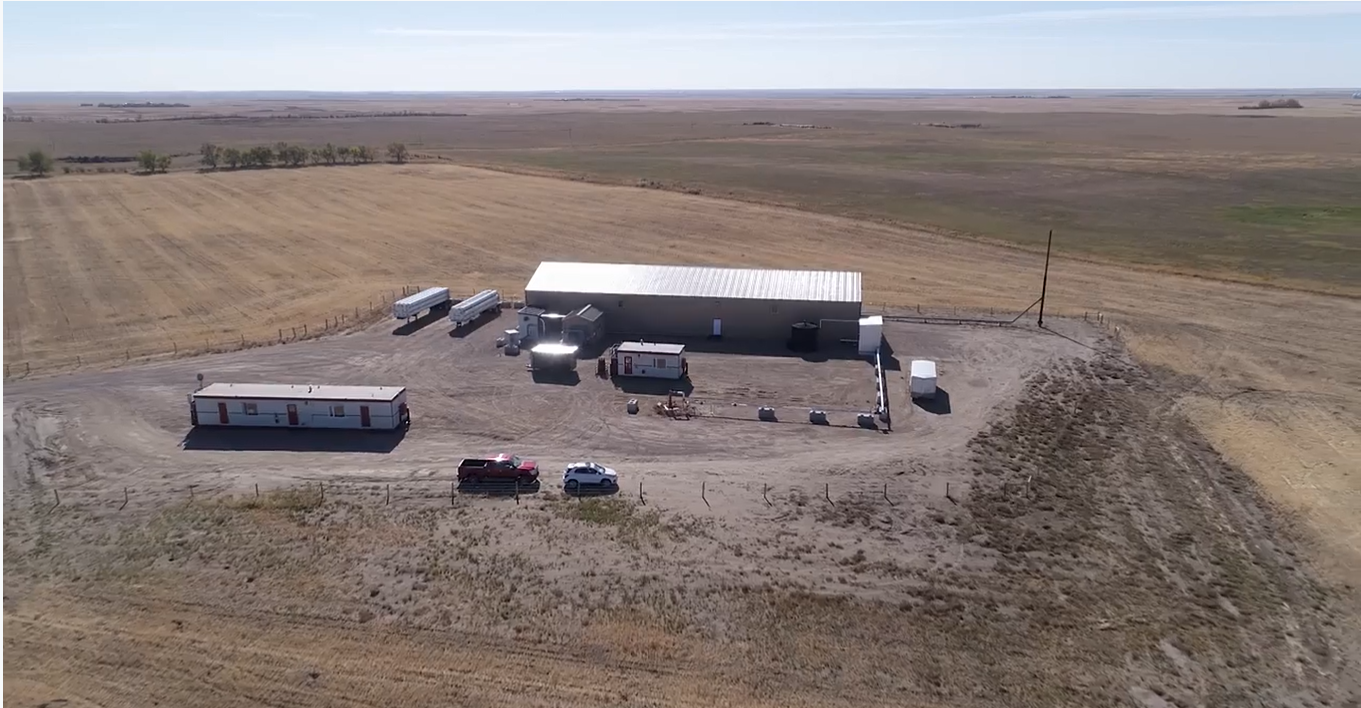Helium is on the rise in Saskatchewan.
Exploration and production of the now in-demand gas definitely is ripe for an industry resurgence in the province.
Canada has the world’s fifth-largest helium resources, with significant underground reserves found here. Over the past five years, almost 20 wells have been drilled within provincial borders, largely in the southwest region.
Pair the available resources with the fact global demand for helium has skyrocketed more than 160 per cent over the past three years and you’re left with what has the potential to be a big business in Saskatchewan.
“We see it as the friendliest jurisdiction in the world, with the most favourable economic vision and a government eager to get an industry moving from its infancy and into a more mainstream industry,” explained Vance Blydo, P.Eng, vice-president of operations for North American Helium (NAH).
“It won’t take over the oil and gas sector, but it’ll be a nice complementary industry.”
In May, NAH announced it would construct in Saskatchewan the largest helium purification facility in Canada.
The Calgary-based company said its new facility will be built near Battle Creek, along the Saskatchewan-Alberta border. It is expected to be running by July 2021.
NAH has big plans for future helium drilling in the province. It is the most active of the handful of companies that have staked out a total of 1.7 million hectares of helium leases and permits in Saskatchewan. NAH currently has 15 wells in the region and expects to drill 10 more by March 2021.
The company’s five-year plan includes wells, separation plants and liquefaction facilities to to be a part of the global supply and demand picture currently pegged at about seven billion cubic feet per year.
“This project will bring new jobs and economic growth to the southwest region, a part of Saskatchewan that prides itself on resource development and economic growth,” Doug Steele, Cypress Hills MLA and legislative secretary for Energy and Resources, said in an interview with Global News in May.
Setting up shop in Saskatchewan made sense to NAH. According to the Saskatchewan government, recent regulatory amendments include an expanded provincial sales tax exemption for exploratory and downhole drilling activity. Saskatchewan has a 4.25 per cent royalty rate for helium.
NAH is not alone in its pursuit of Saskatchewan helium. Explorers from across Canada and the United States, as well as the United Kingdom, have expressed interest in the helium potential on the Canadian prairies, with southwestern Saskatchewan being a primary target.
Whether helium is the next big star for the province’s economy remains to be seen. But the potential is certainly there.
“There’s a lot more exploration now than there was five years ago, but it’s still in its infancy,” explained Melinda Yurkowski, P.Geo., in a 2016 interview with The Professional Edge.
The assistant chief geologist, petroleum geology unit, with the Saskatchewan Geological Survey at the Saskatchewan Ministry of the Economy added, “We can’t really say where it’s going to lead. It really depends on the quality of the deposits that exploration is going to find.”
Helium, the second most plentiful element in the universe, is in short supply above ground.
It’s unique ability to remain a liquid at extremely low temperatures makes it the cooling agent of choice for superconducting magnets in research and medicine, including MRIs.
Western Canada has an advantage over other new sources of helium in that its best reserves are found in pools made up of 95 per cent nitrogen.
Helium is found roughly two-and-a-half kilometres underground and is drilled similarly to oil and gas, minus the carbon footprint.
The gas is mostly nitrogen with small amounts of other gas and then one to two per cent of helium. Once extracted, the gas is then processed in a purification plant for exporting. It is then transported as gas in a high-pressure tube trailer.
The nitrogen found is vented to the atmosphere.
The extremely high pressure in reservoirs deeper than two kilometres under the surface means wells can be productive for years before being depleted, outlasting shallower pools elsewhere in the world.
Are the deposits found in Saskatchewan the best in the country?
“We feel they are,” Blydo said. “There are deposits in Manitoba, in Alberta, but over the past five years we have worked really closely with the government of Saskatchewan and they have acted almost like a concierge to get this industry off the ground.”
Saskatchewan has been home to helium exploration as early as the 1950s. Luck played a role in the original discovery of helium in Saskatchewan as geologists learned about the potential for helium while searching for oil and gas in the late 1950s and 1960s.
The discovery of the helium resulted in steady production in Saskatchewan from 1963-77. However, when the price of helium dropped, well producers quietly shut the doors and walked away.
“Basically, the price for helium was too low to attract investment,” Blydo explained. “But … prices have risen quite substantially. People are starting to get back into the business. It’s making economic sense and we were out in front of this with our early investment.”
Arguably, helium’s most popular claim to fame is associated with party balloons. But it serves many valuable uses in the science and technology industry as well. One of the big uses right now is for a cooling gas for magnetic resonance imaging machines. Because helium is a small molecule and not reactive, it can be used in the manufacturing of semiconductor chips and fibre optic cables, as well as for welding projects and in rocket fuel.
What effect further helium production in Saskatchewan would have on the economy is unknown. But the opportunity is there should additional exploration happen.
“In Saskatchewan, we have the workforce to do it and we have motivated people to bring this industry to fruition,” Blydo said.

